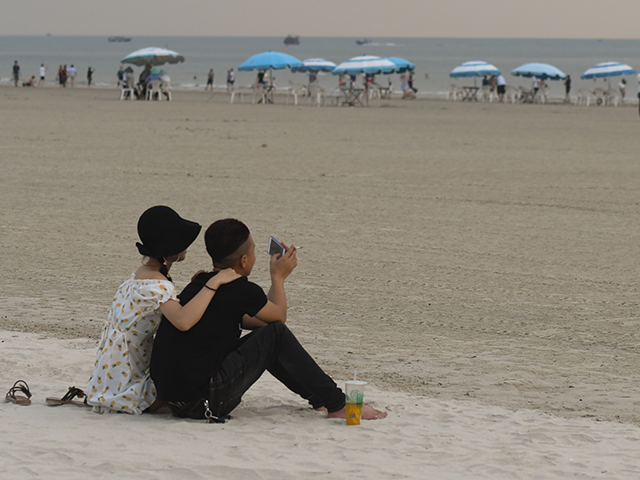Southwestern China’s coastal resort city of Beihai and the nearby island of Weizhou shut their borders on Monday to contain a local flare-up of the Chinese coronavirus, stranding 2,000-plus tourists in the region, the state-run Global Times reported.
“Weizhou Island, one of the most popular spots in Beihai, issued a notice on Monday [July 18] that banned any entry and exit from the island. The same day, Beihai also asked its residents not to leave the city unless necessary,” according to the newspaper.
Representatives of Beihai’s municipal government told reporters at a press conference on Monday that the city was “arranging accommodation” for tourists “trapped” in the area, which is a popular destination for beachgoers in Southeast Asia. Beihai is located in China’s Guangxi Zhuang Autonomous Region, which borders Vietnam to its east.
A tourist currently stuck on the islet of Weizhou, located over an hour by boat from Beihai, told the Global Times that she tried to leave the area on July 17 but was denied exit by local authorities.
The newspaper relayed the woman’s ordeal, writing:
Tang Xiaofang, a tourist who arrived in Beihai last month, told the Global Times that she was sent back to Weizhou Island, an outlying islet over an hour’s boat ride away from Beihai that is popular for beaches, when she took a boat to leave the island on Sunday.
She was staying in her hotel the whole day and dared not go out. Tang had to pay the hotel fee, 70 yuan ($10.36) per day, and she said the “prices on the island are very high.” She said the government hasn’t notified her of the follow-up plans yet.
Beihai’s latest epidemic of the Chinese coronavirus began last week. Health authorities have traced the outbreak’s patient zero to a local wholesale food market. Beihai’s municipal government said on July 18 that the city had recorded “531 COVID-19 [Chinese coronavirus] cases in the past six days,” adding that the tourist destination is currently in a “key period” of responding to the epidemic.
“Omicron’s BA.2.3 mutation, which was recently discovered in the Chinese mainland, triggered this outbreak in Beihai,” the city’s government said on Monday, referring to a particular strain of the Chinese coronavirus.
An unidentified epidemiologist from China’s Center for Disease Control and Prevention (CDC) told the Global Times on July 18 that new subvariants of the Chinese coronavirus such as “Omicron’s BA.2.3” are “unlikely to cause different or more severe symptoms [than previous strains], and the country’s current anti-virus experience could manage to cope with the current waves.”
Authorities in Shanghai, China, recently blamed a new variant of the Chinse coronavirus for sustained movement restrictions across the financial hub. The eastern metropolis endured a city-wide lockdown of its entire population of 25 million from March 28 to June 1 to contain an outbreak of the disease.

COMMENTS
Please let us know if you're having issues with commenting.